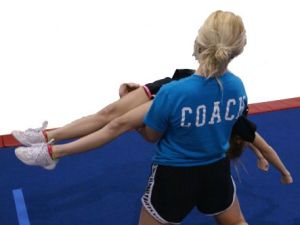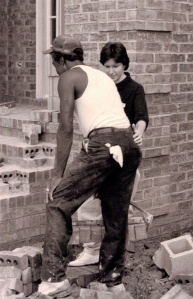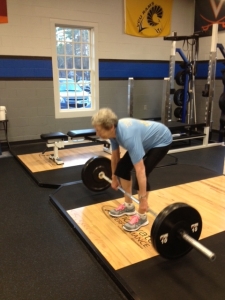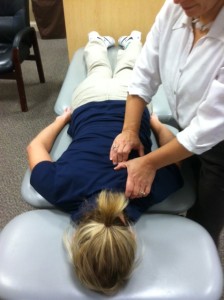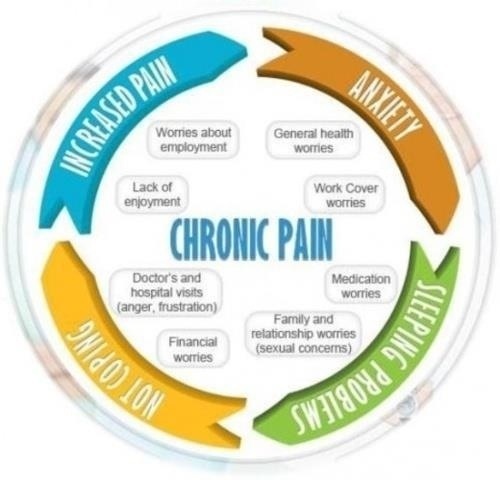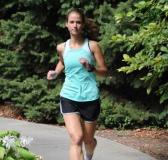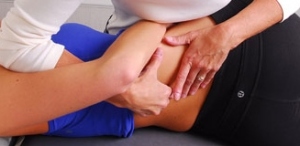 An athlete’s skill set:
An athlete’s skill set:
Athletes have a high level of ability to sense their environment and make minute adjustments to maximize their performance. For example: A baseball pitcher will simultaneously feel the dirt below his feet and the slope of the mound while sizing up the height of the batter so that he can adjust the pitch and throw into the strike zone. Great Manual Therapists are great athletes. All Physical Therapists learn manual therapy techniques in school, but great manual therapists are great athletes who can simultaneously take in the sensation of a joint restriction and pain reaction and adjust the force and direction of their technique to affect the winning outcome (the perfect pitch). It is with this type of talent that great manual therapists can “feel” the joint or the muscle tension and perform highly skilled techniques to help patients gain mobility or learn a new movement pattern.
Great manual therapists use different techniques for different reasons throughout a patient’s recovery. In keeping with the sporting metaphor, I will use gymnastics as an example to illustrate the complexities of manual therapy. As a gymnastics coach for the last 30 years, I have noticed striking similarities in what I do as a coach and what I do as a manual therapist.
There are 4 phases to learning a new skill:
1) The foundation of strength and flexibility: a gymnast first needs to be strong enough and flexible enough to perform a new skill. I will use a back handspring as that skill. If the gymnast does not have the shoulder and upper back flexibility, you will find the coach manually stretching the gymnast’s shoulders until she does have the mobility to perform the skill.
1b) Patients need the same foundation of strength and flexibility to perform every day activities. If a patient does not have enough bend in the knee to go down the stairs, a manual therapist will spend time mobilizing and stretching that knee until full motion ensues.
2) Body position awareness: A gymnast needs to understand where in space the body parts needs to be in order to perform. This is where you will find coaches lifting the gymnast and placing them in the proper positions in sequence to complete the skill. The coach or “spotter” will literally carry them through the entire skill.
2b) Body position awareness is also necessary for patients to learn or re-learn a movement pattern. For example, when learning to lift the arm after shoulder surgery, a patient must learn to move their shoulder blade down before lifting their arm up. The manual therapist will place the shoulder blade in the correct position to help facilitate this awareness.
3) Assisted movement: As the gymnast learns to identify the correct body positions needed to perform that back handspring, the coach moves away from a “heavy spot”. Now the coach is providing an assist through the motion to reinforce the perfect movement sequence and pattern. This phase is on a continuum from “heavy spot” to a “light spot”. A “light spot” indicates using only a tap and a verbal cue to complete the skill.
3b) Assisted movement performed by a manual therapist serves the same purpose. It helps the patient complete the skill and provides feedback for form and technique. It too is on a continuum of involvement from heavy manual assist to verbal cuing combined with touch for timing or form. You might notice this while observing a therapist teaching a lifting pattern. The therapist will hold the spine in position as the patient bends at the hips. Later as the patient learns the skill, only a light tap on the spine and a “get straight” cue will result in a perfect lift.
4) Independence: At this point in the learning process, the gymnast is independent physically with the back handspring. The coach takes his hands away. Verbal cues for timing or feedback continue until the gymnast is consistent with the back handspring.
4b) Independence: In the same way a great coach knows when to takes his hands away from a gymnast who is ready to perform the skill “without a spot”, a great manual therapist knows when it is time to stop using his manual skills and allow the patient to perform the skill independently. They change their strategy from tactile cueing to verbal cueing. Eventually, the patient demonstrates consistent performance without coaching.
This level of expertise is rare, just as great athletes are rare. It requires a high level of physical skills of the therapist coupled with the knowledge of when and how to use those skills that count.
The Coach’s mindset:
Great coaches have always intrigued me. They have an amazing ability to motivate and push their athletes to reach their highest potential, often taking them to performance levels never thought possible. That skill is a gift. So what is the characteristic mindset of great coaches? Here is a list of the characteristics that seem to be a common thread: expertise, passion, goal oriented, strategic and true sense of caring about the whole athlete.
Great coaches are experts in their sport. They can rattle off statistics of the greatest players and the greatest plays of all time. They are passionate about what they do. They “eat, sleep and breathe” their sport. They are goal oriented and have a strategic plan to meet those goals. Those goals are broken down into a strategic plan to reach them that breaks down to every practice, so that every minute counts. Most of all, when you poll athletes about the greatest coach they ever had, they will communicate that he felt the coach truly cared about him as a person and not just an athlete. They will tell you that the coach changed their life.
In the same way, Tidewater Physical Therapists are great coaches. They are experts in manual therapy. They have attended continuing education courses and read the latest research. They are passionate about what they do! They love what they do and it shows in their commitment to learning, in their involvement with their communities and the fact that they lay awake on occasion dreaming of new exercises to help that patient reach their goal. They are goal oriented and have a plan to get you to reach your full potential. A well thought out plan for each session will integrate into the larger strategy to get you back to your active life. TPTI therapists CARE about their patients. They take the time to understand their patients as people. They learn what motivates them and what their ultimate goals are. They will find out what is happening in their whole life, because great coaches and great therapists know that ALL of those things affect performance. Great coaches and great therapists change lives.
It is the combination of athletic-like manual skills and the mindset of a great coach that allows our patients to reach their greatest potential. Perhaps reach levels of performance beyond that imagined. That is what changes lives.
That is the magic behind Manual Therapy Greatness at Tidewater Physical Therapy
